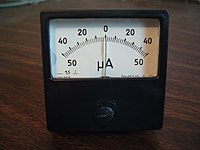An
electrical generator is a device that converts mechanical energy to electrical
energy, generally using electromagnetic induction. The source of mechanical
energy may be a reciprocating or turbine steam engine, water falling through a
turbine or waterwheel, an internal combustion engine, a wind turbine, a hand
crank, or any other source of mechanical energy.
The Dynamo
was the first electrical generator capable of delivering power for industry.
The dynamo uses electromagnetic principles to convert mechanical rotation into
an alternating electric current. A dynamo machine consists of a stationary
structure which generates a strong magnetic field, and a set of rotating
windings which turn within that field. On small machines the magnetic field may
be provided by a permanent magnet; larger machines have the magnetic field
created by electromagnets.
The energy conversion in generator is based on the principle of the production
of dynamically induced e.m.f. Whenever a conductor cuts magneticic flux ,
dynamically induced e.m.f is produced in it according to Faraday's Laws of
Electromagnetic induction.This e.m.f causes a current to flow if the conductor
circuit is closed. Hence, two basic essential parts of an electrical generator
are (i) a magnetic field and (ii) a conductor or conductors which can so move
as to cut the flux.
Generator Construction:
Simple loop
generator is having a single-turn rectangular copper coil rotating about its
own axis in a magnetic field provided by either permanent magnet or electro
magnets.In case of without commutator the two ends of the coil are joined to
slip rings which are insulated from each other and from the central shaft.Two
collecting brushes ( of carbon or copper) press against the slip rings.Their
function is to collect the current induced in the coil. In this case the
current waveform we obtain is alternating current ( you can see in fig). In
case of with commutator the slip rings are replaced by split rings.In this case
the current is unidirectional.
Components of a generator:
Rotor: In its simplest form, the rotor
consists of a single loop of wire made to rotate within a magnetic field. In
practice, the rotor usually consists of several coils of wire wound on an
armature.
Armature: The armature is a cylinder of
laminated iron mounted on an axle. The axle is carried in bearings mounted in
the external structure of the generator. Torque is applied to the axle to make
the rotor spin.
Coil: Each coil usually consists of many
turns of copper wire wound on the armature. The two ends of each coil are
connected either to two slip rings (AC) or two opposite bars of a split-ring
commutator (DC).
Stator:
The stator
is the fixed part of the generator that supplies the magnetic field in which
the coils rotate. It may consist of two permanent magnets with opposite poles
facing and shaped to fit around the rotor. Alternatively, the magnetic field
may be provided by two electromagnets.
Field
electromagnets: Each electromagnet
consists of a coil of many turns of copper wire wound on a soft iron core. The
electromagnets are wound, mounted and shaped in such a way that opposite poles
face each other and wrap around the rotor.
Brushes:The brushes are carbon blocks that
maintain contact with the ends of the coils via the slip rings (AC) or the
split-ring commutator (DC), and conduct electric current from the coils to the
external circuit.
How DC generator works?
The
commutator rotates with the loop of wire just as the slip rings do with the
rotor of an AC generator. Each half of the commutator ring is called a
commutator segment and is insulated from the other half. Each end of the
rotating loop of wire is connected to a commutator segment. Two carbon brushes
connected to the outside circuit rest against the rotating commutator. One
brush conducts the current out of the generator, and the other brush feeds it
in. The commutator is designed so that, no matter how the current in the loop
alternates, the commutator segment containing the outward-going current is
always against the "out" brush at the proper time. The armature in a
large DC generator has many coils of wire and commutator segments. Because of
the commutator, engineers have found it necessary to have the armature serve as
the rotor(the rotating part of an apparatus) and the field structure as the
stator (a stationary portion enclosing rotating parts)















